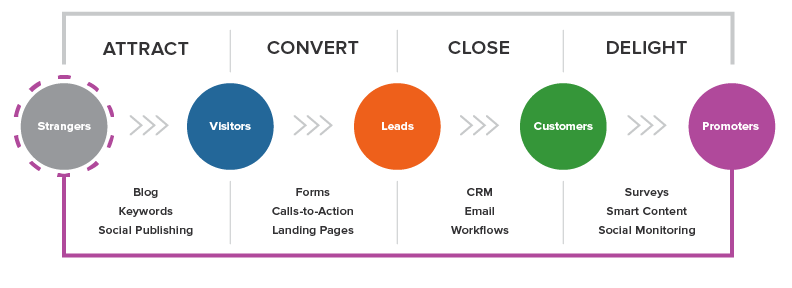 As we get ready enter mid-September, we’re reminded that 2018planning is upon us, and begin to reflect on what 2017 held. Did you meet your business goals? Are you further along than you were last year at this time? And if not, what are you going to do so that you get different results at the end of 2018?
As we get ready enter mid-September, we’re reminded that 2018planning is upon us, and begin to reflect on what 2017 held. Did you meet your business goals? Are you further along than you were last year at this time? And if not, what are you going to do so that you get different results at the end of 2018?
Although change can be a scary thing, it’s necessary in order to avoid repeating the same tired results over and over again.
For logistics companies to increase sales, it’s necessary to be in front of potential customers at the right time. Chances are, the right time isn’t going to be when a sales rep picks up the phone. It’s going to be when the customer decides he’s ready. Since you don’t have insight into customers’ exact timing, the best thing that you can do for your business is to make your company visible and info available so that you can be there when a potential customer decides that the time is right.
Did you know that studies have shown that a majority of people complete up to 60% of the sales process before picking up the phone to talk to a sale rep by doing online research?
Marketing online is something that’s new to many logistics and supply chain businesses, however it works remarkably well. But not just any type of online marketing will do. The type of online marketing that works well for B2Bs like logistics services businesses is a methodology called “inbound marketing”.
What Is Inbound Marketing?
Inbound marketing is marketing that’s focused on getting found by potential customers that are looking for you.
To explain further, with traditional (or “outbound”) marketing, companies focus efforts on finding customers. The techniques that are used are oftentimes poorly targeted. With regards to timing, these outbound marketing message do not coincide with the timing of when their prospects are looking for a solution. Oftentimes, they interrupt people and are therefore ignored. These outbound technique examples include cold-calling, print advertising, T.V. advertising, junk mail, spam, and trade shows.
Technology has made these techniques more expensive for the companies that are using them, and easier to drown out for prospective customers.
- Caller ID blocks cold calls,
- TiVo makes T.V. advertising less effective,
- Spam filters block mass emails, and
- Tools like RSS are making print and display advertising less effective.
So while it’s still possible to get a message out via these channels, it costs more.
Enter The Inbound Marketing Methodology
 Inbound marketing works so well for logistics and supply chain companies for a couple of reasons:
Inbound marketing works so well for logistics and supply chain companies for a couple of reasons:
1.) Inbound marketing is more effective than traditional marketing. As HubSpot CEO Brian Halligan puts it, with the inception of inbound marketing, marketing became much more about the width of your brain than the width of your wallet.
There are three specific ways that inbound improves on the efficiency of traditional marketing:
a.) Less spend — It costs less and the ROI from inbound marketing campaigns is higher.
b.) Better targeting – With Inbound Marketing, companies only approach people who self-qualify on their own by demonstrating an interest in your content, and are likely to be interested in your product.
c.) It’s an investment – When you purchase advertising, in order to maintain a position, you have to keep paying. However, by investing your resources in quality content that ranks in search engine result pages, you’re investing in one of your company’s greatest assets — your website and online presence.
2.) Whether you want to admit it or not, your potential customers, or at least a segment of them, are searching for what your business has to offer online. And although logistics companies most often get business as a result of an existing relationship or by referral or by word of mouth, things have changed and will continue to evolve. There is currently a segment of people that are looking online for your services, and specifically to:
- Learn how to alleviate a specific problem that their company is facing
- Properly address new market developments
- Learn how to deal with new growth challenges
To increase revenue, it’s important to make the changes that will cater to the segement that you’re currently missing. For many, that segment is online.
What Can You do to Increase Revenue with Inbound Marketing?
If you want to make that move to capitalize on the online segment that you’re missing, here’s what you can do —
1.) Create videos to put on your website that explain your process or show assets that potential customers may want to see. These videos not only work much like a sales rep would, but will also enable your company to come up in search engine result pages.
2.) Create a business blog that houses useful, educational content that prospective customers can read.
3.) Make sure that your website is user-friendly and has all of the content that one might need to make a buying decision about your company.
We’ve seen it over and over again….when B2Bs make these three activities and other inbound marketing practices regular part of their marketing activities, their businesses attract highly qualified customers like a magnet.
Lastly, keep in mind that with inbound marketing everything can be tracked. You’ll know exactly what activities are working to drive traffic, and how your business can continue to increase revenue over time.

